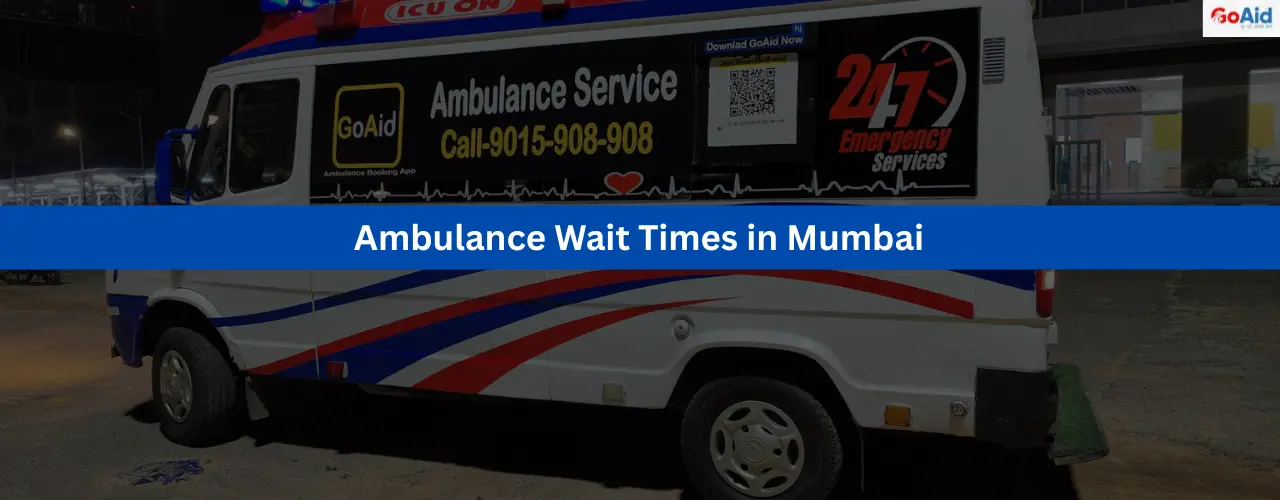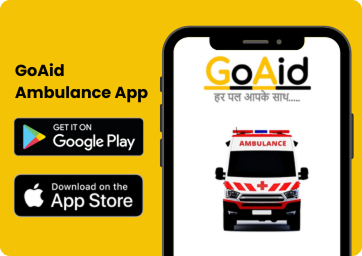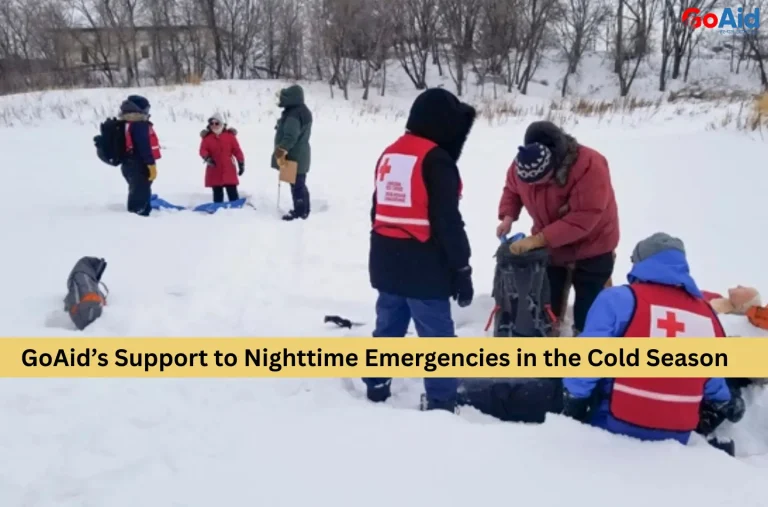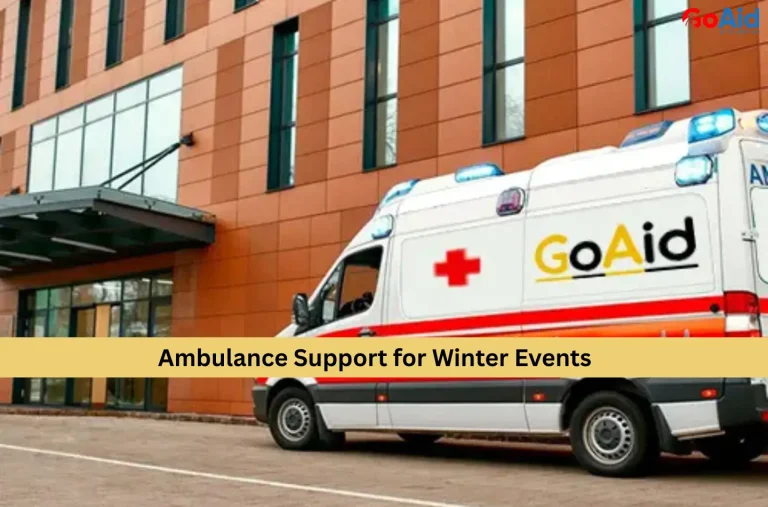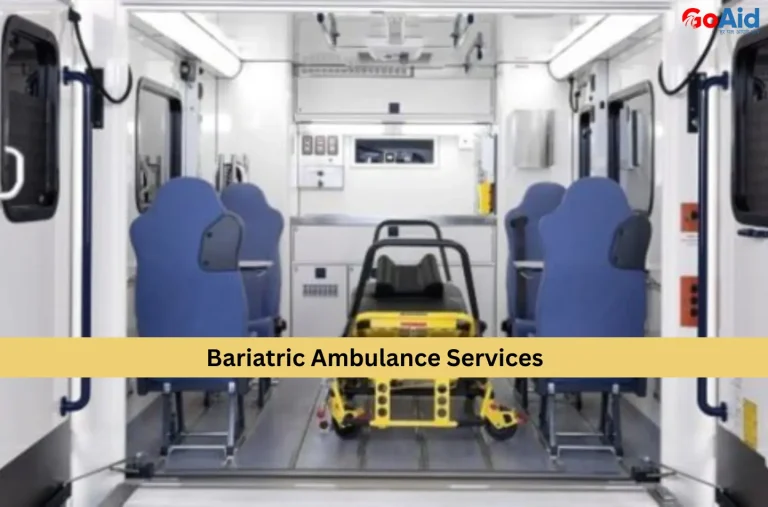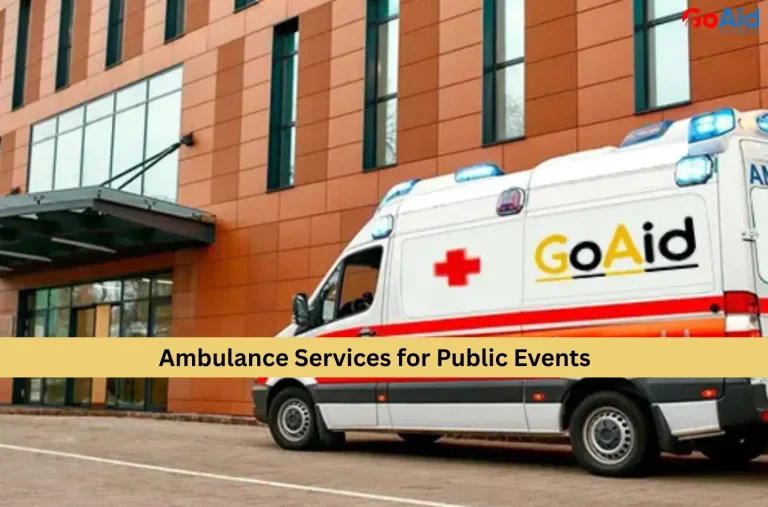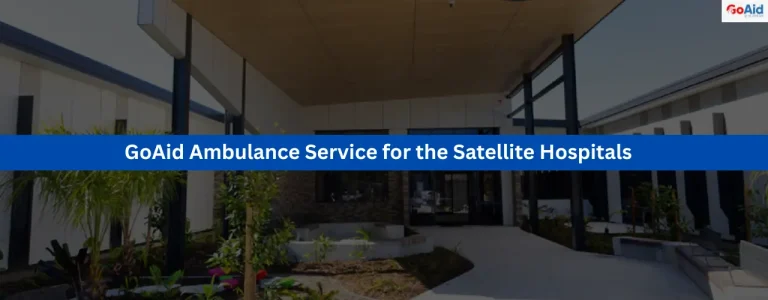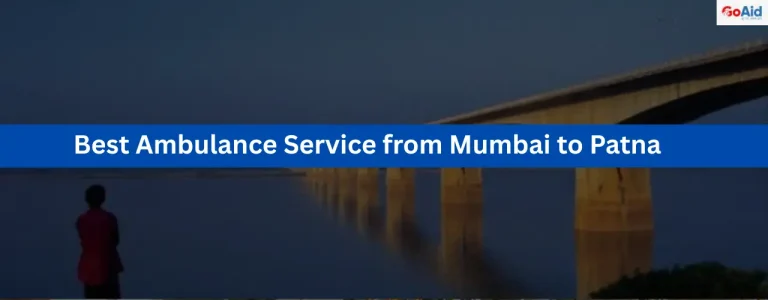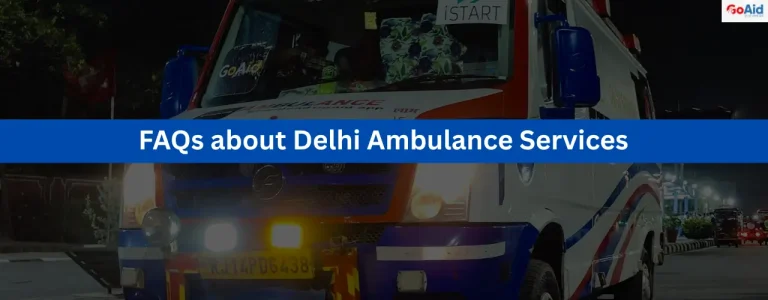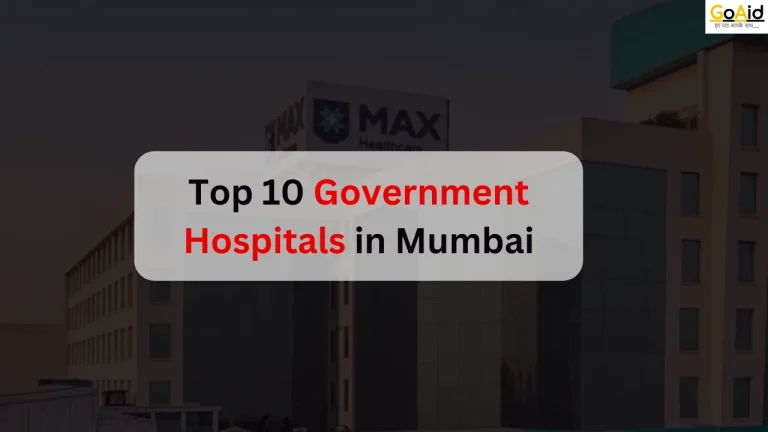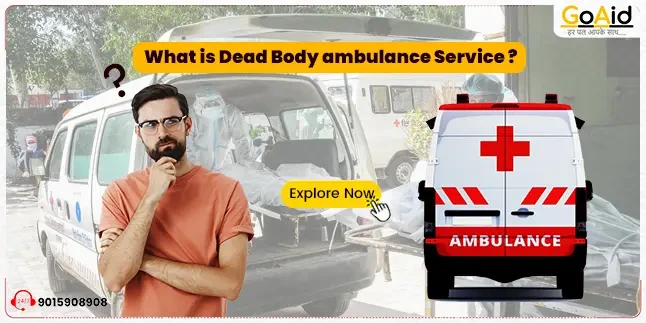If you are living in Mumbai, then you must have seen some of the areas in Mumbai where itŌĆÖs hard for ambulances to reach instantly, and on the other hand, at some places, ambulances can reach to the spot with speed. This is why, itŌĆÖs actually concerning and you must know about those area in Mumbai where ambulance wait time is significantly high. This can help you to by allowing you to prepare for any medical emergencies if you are travelling to those places or visiting those areas.
This is why, in this blog, we have added a comprehensive detail about those areas in Mumbai that have a high ambulance wait times. Are you excited to know all these details? Then read this blog to the end.
So, letŌĆÖs start-
Why Is Ambulance Wait Time a Grave Concern in Mumbai?
Ambulance wait times in Mumbai are not just numbers, they often decide between life and death. In a city where every second matters, delayed ambulance arrivals can worsen medical conditions, increase risk, and create panic. Ambulance response time is critical in emergencies like heart attacks, strokes, or accidents, but MumbaiŌĆÖs growing traffic, narrow lanes, and unplanned constructions often cause significant delays.
When an ambulance in traffic is stuck, it impacts not only the patient but the entire healthcare systemŌĆÖs efficiency. That’s why understanding the factors affecting ambulance response in Mumbai is vital. It helps both authorities and citizens prepare better.
GoAid, with its optimized fleet and deep local knowledge, is bridging this gap. Their smart routing and on-ground team ensure faster response in most locations, even during peak hours. GoAid is becoming the lifeline where the ambulance service in Mumbai needs urgent upgrades.
What Affects Ambulance Response Time in Mumbai?
Several factors influence how quickly an ambulance can reach a patient in Mumbai. Below are the most critical ones:
1. Heavy Traffic and Peak Hour Congestion
The traffic impact on ambulance time is severe in areas like Andheri, Bandra, and Dadar. During rush hours, ambulances get stuck like regular vehicles, delaying life-saving support.
2. Narrow Roads and Encroachments
In congested localities like Dharavi or Kalbadevi, narrow lanes and street-side vendors make it difficult for even a siren-equipped ambulance in Mumbai to navigate quickly.
3. Unplanned Urban Layouts
Some old city areas have unstructured road maps. Without proper urban planning, ambulance drivers often lose crucial time finding the correct routes.
4. High-Rise Clusters with Limited Access
Many modern apartments in areas like Powai or Malad have restricted or gated access. It delays ambulance response time, especially during emergencies inside complexes.
5. Lack of Real-Time Coordination
Without GPS-based dispatch or poor central coordination, ambulances are assigned inefficient routes. GoAid solves this with a smart dispatch system.
6. Road Constructions and Blockages
Ongoing metro and roadwork across Mumbai creates frequent diversions, adding several minutes to the ambulanceŌĆÖs journey.
7. Public Unawareness and Poor Road Discipline
Many drivers donŌĆÖt give way to ambulances despite sirens. This negligence drastically increases the ambulance wait times in Mumbai.
How Does Traffic Congestion Slow Down Emergency Services?
Mumbai’s traffic is infamous, and when ambulances are stuck in it, lives are at risk. Here’s how it directly affects emergency response:
1. Stuck in Peak Hour Gridlock
In key commercial zones like Lower Parel or Andheri East, ambulances during peak times may take 25ŌĆō40 minutes to reach a 10-minute destination. This delay is dangerous for trauma or cardiac patients.
2. Blocked by Dense Traffic at Signals
In areas such as Sion or Kurla, signals get heavily jammed. Even with sirens, an ambulance in traffic struggles to move, especially where traffic lanes are blocked by autos and bikes.
3. No Dedicated Ambulance Lane
Unlike some metro cities abroad, Mumbai lacks dedicated emergency lanes. This means ambulances move with regular traffic, increasing the ambulance wait times in Mumbai.
4. Public Indifference and Lane Violations
Often, vehicles donŌĆÖt give way to ambulances due to a lack of awareness or road discipline. This worsens the ambulance response time even in critical situations.
5. Diversions Due to Construction Projects
Metro rail and flyover constructions create temporary closures in places like Ghatkopar and Chembur, forcing ambulances to take longer detours, delaying care.
Top Areas in Mumbai with Slow Ambulance Response
Some localities in Mumbai consistently experience longer ambulance wait times due to factors like traffic, poor infrastructure, and narrow access roads. Below are seven key areas known for delayed ambulance response:
1. Andheri East
Why it is a slow ambulance response area in Mumbai?
Andheri East faces frequent gridlocks due to its mix of commercial complexes, metro work, and narrow bylanes. Ambulances often get stuck in long traffic queues, especially during peak hours, significantly increasing ambulance response time and delaying emergency care in this busy zone.
2. Dharavi
Why it is a slow ambulance response area in Mumbai?
DharaviŌĆÖs densely packed settlements, extremely narrow lanes, and lack of direct vehicle access make it one of the most challenging areas for ambulances. Emergency vehicles often stop far away, and medical staff must walk inside, causing dangerous delays in critical situations.
3. Dadar
Why it is a slow ambulance response area in Mumbai?
As a major transport junction with ongoing roadwork, heavy pedestrian flow, and regular events, Dadar is notorious for delays. Ambulances often get held up in bumper-to-bumper traffic, especially near railway stations and market areas, affecting overall ambulance wait times in Mumbai.
4. Kurla
Why it is a slow ambulance response area in Mumbai?
KurlaŌĆÖs broken roads, regular waterlogging, and chaotic vehicle movement make it a high-delay zone for ambulances. The absence of clear lanes and poor traffic management further worsen the situation, severely affecting emergency service speed and patient safety in this area.
5. Malad West
Why it is a slow ambulance response area in Mumbai?
Residential societies with narrow lanes, security gates, and parked vehicles in Malad West slow down ambulance entry. Add to that the traffic on Link Road and Western Express Highway, and you get prolonged response times in this otherwise well-developed locality.
6. Sion
Why it is a slow ambulance response area in Mumbai?
Sion is a vital corridor connecting multiple zones. However, overloaded intersections, frequent signal halts, and slow-moving traffic during the day make it difficult for ambulances to pass through quickly, even with sirens. This raises serious concerns during medical emergencies.
7. Ghatkopar
Why it is a slow ambulance response area in Mumbai?
Ongoing metro rail projects, detours, and narrow inner streets make Ghatkopar one of the slowest areas for ambulance response. Ambulances often need to reroute or face delays at railway crossings, affecting time-sensitive treatments and urgent hospital transfers.
Read More: Free Ambulance Service for Pregnant Women in Mumbai
Emergency Hotspots: Where Ambulances Arrive Fastest in Mumbai
While some areas in Mumbai face severe ambulance delays, others benefit from better infrastructure, wider roads, and faster coordination. These emergency-friendly zones allow ambulance services in Mumbai, especially those from GoAid, to respond quickly and save lives effectively. Here are the top areas with fast ambulance arrival:
1. Fort
Why it has a fast ambulance response in Mumbai?
Fort has wide roads, controlled traffic, and proximity to major hospitals like JJ and St. George. These factors allow ambulance in Mumbai to reach patients quickly. This makes it one of the most efficient zones for emergency response during both day and night.
2. Nariman Point
Why it has fast ambulance response in Mumbai?
This commercial hub is well-planned, has proper lane discipline, and enjoys regular traffic regulation. The presence of corporate medical units and close connectivity to hospitals ensures faster ambulance arrival, especially by private providers like GoAid Ambulance Service in Mumbai.
3. Marine Lines
Why it has fast ambulance response in Mumbai?
Marine Lines offers clear access routes and low congestion during most hours. Its central location and proximity to hospitals enable quicker ambulance response time. This makes it a dependable emergency zone, especially for patients requiring immediate stabilization.
4. Parel
Why it has fast ambulance response in Mumbai?
Parel hosts multiple super-specialty hospitals like KEM and Tata Memorial. With medical infrastructure nearby and wider roads, ambulances, particularly from GoAid ambulance service in Mumbai, can reach patients within minutes, even during mid-day traffic.
5. Lower Parel
Why it has fast ambulance response in Mumbai?
Lower Parel has seen smart urban development with improved roads and emergency access points. Ambulances can easily navigate between offices, residential towers, and hospitals, helping reduce ambulance wait times in Mumbai significantly in this area.
6. Colaba
Why it has fast ambulance response in Mumbai?
Colaba benefits from organized traffic, responsive traffic police, and well-defined entry routes. The area is less prone to construction or encroachments. This ensures that ambulance in traffic moves faster and emergency response remains efficient.
7. BKC (Bandra Kurla Complex)
Why it has fast ambulance response in Mumbai?
As a corporate district with modern roads and managed infrastructure, BKC allows ambulance services in Mumbai to function smoothly. With fewer encroachments and traffic bottlenecks, ambulances face minimal delays here.
8. Navi Mumbai (Vashi, Belapur)
Why it has fast ambulance response in Mumbai?
Though slightly outside central Mumbai, Navi Mumbai areas like Vashi and Belapur have wide, signal-free roads and lower congestion. Emergency services here perform better due to modern layouts and strategic hospital locations.
9. Churchgate
Why it has fast ambulance response in Mumbai?
ChurchgateŌĆÖs well-managed traffic, signal coordination, and immediate access to South Mumbai hospitals make it one of the fastest zones for ambulance response. GoAid and other private ambulances reach here in as little as 5ŌĆō10 minutes.
How GoAid Ensures Fast Ambulance Service in Mumbai?
GoAid stands out as a reliable ambulance service in Mumbai by using smart dispatch technology, GPS tracking, and a deeply local team that understands traffic dynamics. To combat ambulance wait times in Mumbai, GoAid strategically places ambulances near emergency-prone zones.
Even during peak hours or ambulance in traffic conditions, our drivers use alternate routes to reduce delays. With a commitment to under 10-minute ambulance response time, GoAid is transforming emergency care.
Our network operates 24/7 with trained paramedics to ensure fast medical support across Mumbai, especially in zones most affected by traffic impact on ambulance time.
Book Ambulance: GoAid Ambulance Service
Conclusion
In conclusion, we have provided you all the details about those areas in Mumbai that have very slow ambulance response time or higher ambulance wait times. Knowing these zones helps you stay more prepared during emergencies, especially when travelling or residing there.
WeŌĆÖve also highlighted the factors affecting ambulance response in Mumbai, including traffic congestion, narrow lanes, and public indiscipline. While these delays are real and concerning, services like GoAid Ambulance Service in Mumbai are actively working to reduce them. If you or your loved ones ever need a quick and reliable ambulance in Mumbai, GoAid is just a call away.
FAQs
Question-1: Which areas in Mumbai have the longest ambulance wait times?
Answer: Areas like Andheri East, Kurla, Dharavi, and Ghatkopar face the longest ambulance wait times in Mumbai due to traffic congestion, narrow roads, and poor infrastructure, which directly affects ambulance response time and access.
Question-2: How does traffic affect ambulance services in Mumbai?
Answer: Traffic impact on ambulance time is a major issue in Mumbai. Ambulances get stuck during peak hours, face blocked lanes, and lack dedicated routes, especially in congested zones, leading to serious response delays.
Question-3: What is the average ambulance response time in Mumbai?
Answer: On average, ambulance response time in Mumbai ranges from 20 to 40 minutes in high-traffic areas. However, GoAid Ambulance Service in Mumbai aims to reach patients in under 10 minutes in most locations.
Question-4: How does GoAid overcome traffic delays in Mumbai?
Answer: GoAid uses real-time traffic data, GPS tracking, and local area knowledge to beat ambulance in traffic delays. By placing ambulances in high-demand zones, GoAid minimizes ambulance wait times in Mumbai effectively.
Question-5: Which ambulance service is fastest in Mumbai?
Answer: GoAid Ambulance Service in Mumbai is known for its fast and reliable 24/7 support. It responds quicker than most providers by combining smart routing with trained staff and strategically located ambulances.
Question-6: What are the main factors affecting ambulance response in Mumbai?
Answer: The top factors affecting ambulance response in Mumbai include traffic congestion, road blockages, poor lane discipline, narrow access roads, and construction detours. These delay emergency medical care during critical times.
Question-7: How can I get a quick ambulance in Mumbai during emergencies?
Answer: You can call GoAid Ambulance Service in Mumbai or use their app for fast booking. Their team guarantees a 10-minute ambulance response time and is trained to handle delays due to traffic impact on ambulance time.

